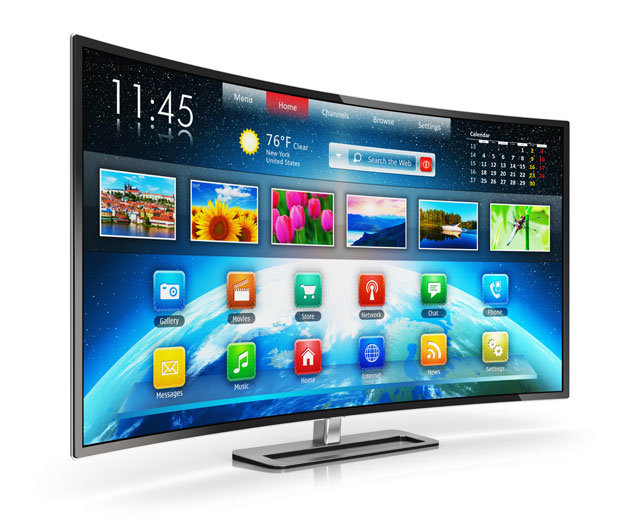Android TV: Has Google Missed a Trick
Saturday, August 16, 2014

|
Navin Natoewal |
Smart TV is facing an uncertain future. Once touted as the next generation of television, mashing together the regular broadcast line up with online video services to offer the best of both worlds, it’s ultimately failed to deliver. Everyone’s using Netflix and Hulu, but few are willing to struggle through the complicated user interface found on today’s smart TVs just to watch content online, especially when a far better experience can be found on tablets and smartphones.
The reality is millennials are willing to plug a laptop into the TV to bring video on demand into the living room, while older generations are equally happy to use an iPad. Why? Because these alternatives are straightforward, accessible, and have a user interface that’s both understood and simple to navigate. When you consider consumers will naturally gravitate towards the platform that’s easiest to use it’s no surprise smart TV has been left out in the cold, yet it needn’t be this way. Smart TV represents a great opportunity for app developers and operators alike, but first the industry needs to resolve the issue of consumer engagement.
This problem is nothing new. Despite a steady rise in the use of video on demand services in recent years and growing smart TV adoption figures, it would be fair to say smart TV is not the great success it was once expected to be. Even though it still has potential to become the go-to destination for accessing online video on the main family screen, all attempts to reinvigorate this platform and capture consumer attention have shot wide of the mark.
Now, with the impending launch of Android TV, Google could soon become the latest casualty. Announced at the I/O developer conference last month, Google’s new venture looks set to be yet another example of a smart TV platform with an inaccessible and difficult to navigate operating system. But that’s not a reflection on Android OS; it’s the remote control that’s to blame.
Smart TV’s fundamental engagement problem could be easily resolved by looking at how consumers use other internet-enabled technologies. Smartphones and tablets, for example, largely owe their success to pointing and gesture control, which gives much greater flexibility over the user experience.
As a company at the forefront of smartphone development, Google could quite easily have replicated the success of its mobile OS for Android TV. By introducing a new control technology capable of rectifying the navigational issues that have plagued the smart TV platform for years, Google could have made Android TV stand a full head and shoulders above the competition. Instead, the Android TV software development kit (SDK) dictates all applications must conform to the age-old up-down-left-right (UDLR) user interface model.
Essentially, this means consumers will be forced to operate Android TV apps with a traditional four-directional D pad remote, despite the fact the majority of existing Android applications support intuitive direct touch for user input. The Android TV SDK offers no capacity for the accurate pointing and gesture control that makes a tablet or smartphone a pleasure to use.
Ultimately, this means accessing online services or applications on Google’s platform will be no different to using competing smart TVs from the likes of Samsung or Toshiba. And even that’s assuming there will be applications available for Android TV on launch – Smart TV apps do not enjoy the same reach as mobile platforms, largely due to the uninspiring remote control. By sticking with the archaic UDLR user interface model Google has effectively removed any incentive for mobile developers to port their apps over to Android TV when it’s made available.
The crux of the problem is video on demand platforms like Netflix are not intrinsically tied to TV. Consumers can, and often do, access these services from other devices which only increases their reluctance to use an archaic TV remote when a touch screen smartphone or tablet are readily available. There’s an unwritten consumer expectation that smart TV should offer a lean-back experience – the sort of experience a touch screen can provide, but a traditional remote control cannot.
If Google had introduced pointing and gesture control there would have been an immediate incentive for consumers to use Android TV over the competition. App developers would also have been able to deploy their existing applications with little modification. In doing so, Android TV could have had a transformational impact on the smart TV industry.
It is clear consumers want a better user experience too. The results from NPD’s recent Connected TV User Experience report found ease of use features amounted to four of the top 10 desired consumer changes when it comes to TV. One of those suggestions was for a better, more intuitive remote control. Another was to make it easier to navigate smart TV apps. Evidently, both could be easily achieved by introducing a new remote technology.
Philips uWand also conducted its own research last year. Polling those in the consumer electronics industry – the very people responsible for building and developing smart TV user interfaces – the research came to a similar conclusion. Somehow, although the very people at the forefront of developing and selling Smart TVs recognise the dissatisfying user experience, they have not yet connected the dots and realised the remote control is to blame. It seems the UDLR interface is so deeply rooted in the foundations of TV that manufacturers seem unwilling to change it, despite the countless flaws.
With this in mind, but Google’s decision not to include a new remote control is even more unusual when you consider the company has gone to great lengths to show Android TV is not an entirely new platform. Google already tried that with Google TV, which didn’t take. Instead, Android TV is supposed to be a refined Android OS experience built for the larger TV screen. Despite this, Google has critically underestimated the importance of the remote control, defining it as the ‘lowest common denominator’ and suggesting developers who optimise apps and games for the UDLR navigational experience will see the most success. However, if this approach hasn’t worked until now, it seems unlikely Android TV will fare any better.
A big mistake has been made. Android TV is supposed to be the future of smart TV, so why pair a smart system with a dumb remote control?
This content is made possible by a guest author, or sponsor; it is not written by and does not necessarily reflect the views of App Developer Magazine's editorial staff.

Become a subscriber of App Developer Magazine for just $5.99 a month and take advantage of all these perks.
MEMBERS GET ACCESS TO
- - Exclusive content from leaders in the industry
- - Q&A articles from industry leaders
- - Tips and tricks from the most successful developers weekly
- - Monthly issues, including all 90+ back-issues since 2012
- - Event discounts and early-bird signups
- - Gain insight from top achievers in the app store
- - Learn what tools to use, what SDK's to use, and more
Subscribe here




_cptybzmh.jpg)








